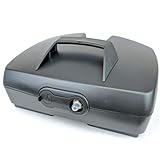Key Takeaways For Best Mobility Scooter Batteries
Battery Types: Choose between Sealed Lead Acid (SLA) and Lithium-Ion batteries based on factors like cost, weight, and maintenance preferences.
Consideration Factors: Factors to consider include battery capacity, voltage, cycle life, charging time, weight, maintenance, cost, compatibility, and warranty.
Maintenance Tips: Ensure optimal battery performance by charging regularly, avoiding overcharging or deep discharging, storing in a cool place, checking for damage, and following manufacturer guidelines.
Top Mobility Scooter Batteries
Mobility scooters offer individuals with walking difficulties greater freedom to move about. To ensure the optimal functionality of your mobility scooter, it is essential to use high-quality batteries. This article provides a detailed guide on finding the right batteries for your mobility scooter.
Types of Mobility Scooter Batteries:
Sealed Lead Acid (SLA) Batteries:
- SLA batteries are the most common type used in mobility scooters.
- They are affordable and widely available.
- Available in two subtypes: AGM (Absorbent Glass Mat) and Gel.
- AGM batteries are maintenance-free, while Gel batteries are more resilient and designed for deep cycling.
Lithium-Ion Batteries:
- Lithium-ion batteries are lightweight and offer longer life and more power.
- They have a higher upfront cost but may be more cost-effective over time due to their longevity and energy efficiency.
- Lithium batteries are maintenance-free and don’t require regular topping up with distilled water.
Factors to Consider When Choosing Mobility Scooter Batteries:
Battery Type:
- Consider your specific needs and budget when choosing between SLA and lithium-ion batteries. Lithium-ion batteries offer advantages in weight, lifespan, and energy efficiency.
Battery Capacity (Ah):
- Battery capacity determines how far you can travel on a single charge. Ensure the battery capacity meets your daily requirements.
Voltage (V):
- Most mobility scooters use 12V batteries. Ensure you select the correct voltage for your scooter’s configuration.
Cycle Life:
- Lithium-ion batteries generally have a longer cycle life than SLA batteries. Consider how often you plan to use the scooter and how frequently you’ll recharge the batteries.
Charging Time:
- Lithium-ion batteries typically have shorter charging times compared to SLA batteries. If convenience is a priority, this could be a deciding factor.
Weight:
- Lithium-ion batteries are considerably lighter than SLA batteries, making them ideal for portable scooters and users who may need to lift them.
Maintenance:
- SLA batteries require periodic maintenance, including topping up with distilled water, whereas lithium-ion batteries are maintenance-free.
Cost:
- Consider your budget for both the initial purchase and long-term maintenance. While lithium-ion batteries have a higher upfront cost, they may be more cost-effective over their extended lifespan.
Compatibility:
- Ensure the batteries you choose are compatible with your specific mobility scooter model. For guidance, consult your scooter’s manual or manufacturer.
Warranty:
- Check the warranty offered with the batteries. High-quality batteries often come with more extended warranties, providing peace of mind.
Tips for Battery Care and Maintenance:
- Charge the batteries regularly, ideally after each use, to maintain longevity.
- Avoid overcharging or deep discharging, as this can damage the batteries.
- Store the batteries in a cool, dry place when not in use.
- Check the batteries for signs of damage, leaks, or corrosion, and replace them if necessary.
- Follow the manufacturer’s guidelines for maintenance and care.
Conclusion:
Selecting the best mobility scooter batteries involves considering factors such as battery type, capacity, cycle life, and cost. Your choice should align with your needs, budget, and usage patterns. Regular maintenance and proper care of the batteries will ensure they perform optimally, providing reliable and efficient power for your mobility scooter and, ultimately, greater independence and mobility.
Top Mobility Scooter Batteries
Explore More Mobility Scooter Essentials
- Best Mobility Scooter Accessories – Discover essential accessories that enhance your mobility scooter experience.
- Best Mobility Scooter Chargers – Find top-rated chargers to keep your mobility scooter powered and ready for use.
- Best Mobility Scooter Ramps – Learn about ramps designed for easy loading and unloading of your scooter.
- Best Mobility Scooter Covers – Protect your mobility scooter from the elements with high-quality covers.






